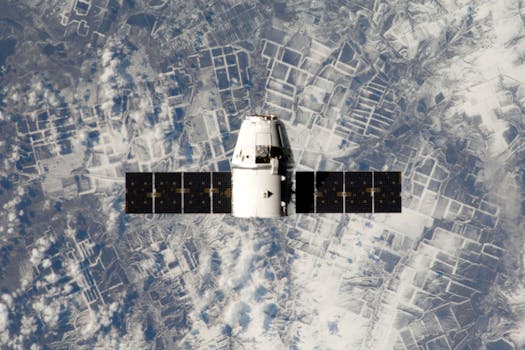From Ground to Sky: The Evolution of Satellite Telecommunications Technology

From Ground to Sky: The Evolution of Satellite Telecommunications Technology
Satellite Telecommunications has come a long way since its inception, transforming the way we communicate and connect with each other. The evolution of satellite telecommunications technology has been a remarkable journey, marked by significant milestones and innovations. In this article, we will delve into the history and development of satellite telecommunications, exploring its origins, key milestones, and current trends.
The concept of satellite telecommunications dates back to the 1940s, when scientist Arthur C. Clarke proposed the idea of using geostationary satellites for communication purposes. However, it wasn’t until the 1960s that the first commercial satellite, Intelsat 1, was launched, marking the beginning of the satellite telecommunications era. Since then, the industry has experienced rapid growth, driven by advances in technology, increased demand for global connectivity, and the expansion of telecommunications services.
The Early Years of Satellite Telecommunications
The early years of satellite telecommunications were marked by significant technical challenges, including limited bandwidth, high latency, and interference. Despite these challenges, the industry continued to evolve, with the introduction of new satellite systems, such as Intelsat and COMSAT. These systems enabled international telecommunications, facilitating global communication and commerce. The 1970s and 1980s saw the launch of several notable satellites, including Westar 1 and Telstar 1, which further expanded the capabilities of satellite telecommunications.
One of the key milestones in the evolution of satellite telecommunications was the introduction of the geostationary satellite. Geostationary satellites, which orbit the Earth at an altitude of approximately 36,000 kilometers, enable continuous communication between two points on the Earth’s surface. This innovation revolutionized the telecommunications industry, enabling real-time communication and facilitating the growth of global commerce.
Modern Satellite Telecommunications
Today, satellite telecommunications play a vital role in modern communication systems, providing a range of services, including voice, data, and internet connectivity. The industry has experienced significant advancements in recent years, driven by the introduction of new technologies, such as high-throughput satellites (HTS) and very small aperture terminals (VSATs). These innovations have enabled faster data transfer rates, increased bandwidth, and improved connectivity, making satellite telecommunications a viable alternative to traditional fiber-optic networks.
The use of satellite telecommunications has expanded beyond traditional applications, such as international telecommunications and television broadcasting. Today, satellite telecommunications are used in a range of industries, including aviation, maritime, and emergency response. The development of satellite-based internet services, such as broadband global area network (BGAN) and satellite-based cellular backhaul, has also enabled remote communities to access the internet, bridging the digital divide and facilitating economic development.
Current Trends and Future Developments
The satellite telecommunications industry is expected to continue growing, driven by increasing demand for global connectivity and the expansion of telecommunications services. The development of new technologies, such as 5G and the Internet of Things (IoT), will also drive growth, as satellite telecommunications play a critical role in enabling these technologies. The use of satellite telecommunications in emerging markets, such as Africa and Asia, is also expected to increase, as these regions continue to develop their telecommunications infrastructure.
One of the key trends in the satellite telecommunications industry is the development of low-Earth orbit (LEO) satellites. LEO satellites, which orbit the Earth at an altitude of approximately 2,000 kilometers, offer several advantages over traditional geostationary satellites, including lower latency and higher bandwidth. The development of LEO satellites is expected to enable new applications, such as real-time video streaming and online gaming, and will play a critical role in the development of 5G and IoT services.




